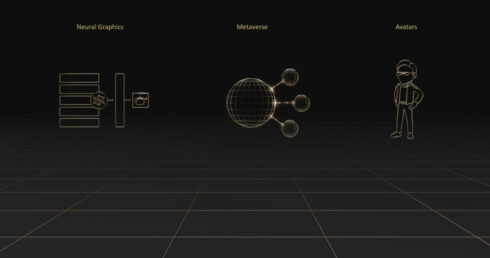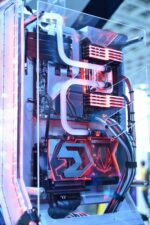
NVIDIA, the company known for designing and manufacturing GPUs, today announced a new range of developer frameworks, tools, apps, and plugins for its platform for building and connecting Metaverse worlds based on Universal Scene Description (USD), NVIDIA Omniverse.
According to the company, with this expansion, users gain access to new AI-powered tools and features that offer artists, developers, and engineers the power to construct virtual worlds and content easier than ever.
This release also works to help users more easily connect to 3D applications such as PTC Creo, SideFX Houdini, Unity, and solutions from the Siemens Xcelerator platform.
“The metaverse is a multi trillion-dollar opportunity that organizations know they can’t ignore, but many struggle to see a clear path forward for how to engage with it,” said Rev Lebaredian, VP of Omniverse and simulation technology at NVIDIA. “NVIDIA Omniverse closes the gap between the physical and virtual worlds, and these new tools, technologies and collaborations make it possible to leap into the 3D internet today.”
A key element of this expansion is the launching of NVIDIA Omniverse Avatar Cloud Engine, a suite of AI models and services made for building and deploying lifelike virtual assistants and digital humans.
In addition, the company has introduced several platform updates such as:
- Omniverse Kit: New OmniLive Workflows brings an overhaul of USD-based collaboration in Omniverse that offers increased speed and performance to multiple app 3D workflows
- Omniverse Audio2Face: An AI tool with the ability to create facial animations straight from an audio file and infer and generate realistic emotions
- Omniverse Machinima: Several new, free 3D assets from Post Scriptum, Beyond the Wire, and Shadow Warrior 3 games, as well as a suite of new AI animation tools
- Omniverse DeepSearch: Omniverse Enterprise customers can utilize AI to intuitively and accurately search through large untagged 3D asset databases of visuals using nature language.
NVIDIA Modulus, a physics machine-learning framework, is also now available as an Omniverse Extension.
According to NVIDIA, Modulus-trained Physics ML models are 4,000x and even 100,000x faster depending on the application. Additionally, they provide accuracy closer to high-fidelity simulations.
NVIDIA has also introduced 11 new Omniverse Connectors as a part of its collaborative efforts with its partners in the industrial, design, simulation and CAD software ecosystems. These bring the total number of Connectors to the Omniverse USD ecosystem to 112.
Lastly, the company has released several updates to the core simulation technologies that represent materials, physics, and light in Metaverse worlds.
To learn more about this expansion, visit the website and watch NVIDIA’s SIGGRAPH special address.






